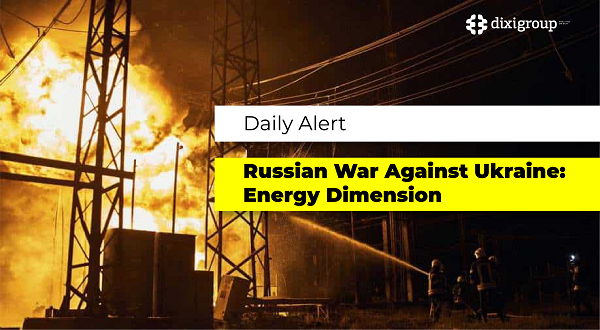Weak grid. What you need to know about the blackout in Spain and Portugal
Causes and consequences of the massive power outage in Europe

At the end of April, the European energy market was shaken by an unexpected incident: more than 55 million consumers in Spain and Portugal were left without electricity for a day due to a large-scale power outage and a significant loss of generation. The causes of the accident are still unknown, and state authorities are continuing their investigation. But government officials and representatives of the energy industry community have already drawn certain conclusions about the situation and the challenges that have surfaced due to the blackout that covered the Iberian Peninsula and paralyzed the market.
Ukrainian Energy has examined key statements and expert comments on the circumstances of the most massive power outage in the history of modern Europe, and also delved into the political disputes that are taking place in the market, limiting the development of energy networks for the sake of increasing security.
Why the blackout happened
According to the latest data from the Spanish power grid operator Red Eléctrica, cyberattacks, personnel errors or abnormal weather phenomena have been ruled out as the causes of the April 29 power outage. Eduardo Prieto, the company's head of operations, said that two "blackout events" occurred just one second apart just before the outage.
This happened in southwestern Spain, a region with a high level of solar energy production. The blackout then spread to Portugal and the regions of France near the Spanish border.
The massive blackout affected almost the entire population of the Iberian Peninsula, paralyzing shops, businesses, rail and public transport powered by electricity, the banking sector and mobile operators. "This must not happen again. We will take the necessary measures to prevent such incidents,” Spanish Prime Minister Pedro Sanchez promised at the time.
This week, on May 20, Spanish Energy Minister Sara Aagesen shared an update on the investigation. According to her, industry and government experts are currently considering “grid overvoltage” as the most likely cause of the blackout.
“Preliminary results of the investigation indicate that in a highly interconnected grid, under conditions of low consumption, overvoltage problems can occur,” the official said. “The grid was ready to provide up to 40 GW of consumption, while on the day of the incident, consumption barely reached 25 GW. So the problem was not the number of cable connections,” she explained.
But the question still remains whether the drop in generation caused the fluctuations in the grid, or whether the power plants were shut down due to overvoltage. Sensors record everything that happens in the grid. Therefore, a comprehensive analysis of this data should provide definitive answers about the causes of the accident.
How the power grid works
The process can be summarized as follows. The most important components of the power system are power plants and transmission and distribution networks. Electricity generated at power plants is distributed using power lines within the country, and can also go beyond national borders. To reach end users, electricity enters the distribution networks.
In order for the grid to remain stable, as much electricity as is consumed must be constantly supplied to the power system. Whether there is too much or too little power in the system is indicated by its frequency. The European grid standard is a frequency of 50 Hertz. If the frequency drops, this means that more electricity is consumed than is produced. If it rises, more electricity is fed into the grid than is needed.
“Both too high and too low frequency are not very useful situations. But it becomes especially critical if the frequency continues to fall,” explains Gabriela Hug, professor of information technology and electrical engineering at ETH Zurich.
To keep the frequency stable, energy suppliers make demand forecasts. Daily operating schedules for power plants are developed based on this data. Deviations from these estimates can be observed in real time on the equipment of national energy grid operators. For example, if the frequency drops to 49 Hertz due to too much energy demand, a so-called “load shedding” begins. Some consumers are then disconnected from the grid so that the overall load decreases and the rest of the system remains stable and operates without disruptions.
There are different types of reserves in the grid that need to be activated at different speeds when fluctuations between demand and supply occur. Initially, from the first seconds of imbalance, the so-called "primary regulation reserve" is used. This includes gas or coal generation, which is able to increase or decrease production for a short time, deviating from the agreed work schedule.
Then the national grid operator (in Ukraine, this is the state-owned company Ukrenergo) can intervene in the stabilization. It coordinates the launch of so-called “secondary regulation reserves” (usually hydroelectric power plants) to restore the frequency to 50 Hertz within a few minutes.
Local power outages can occur, for example, when a cable supplying a certain area of a city or settlement is damaged. National grids have protective mechanisms that automatically disconnect the damaged section in such cases to limit the consequences.
A blackout, on the other hand, is a large-scale phenomenon and takes longer to eliminate. “Blackouts usually occur as a result of a combination of several unforeseen events. For example, a critical line or a large power plant fails, and at the same time there is another unforeseen event or extreme weather event - say, a storm that damages the grid,” said Gabriela Hug.
The vulnerability of “green” energy
Considering the possible causes of the large-scale power outages in Spain and Portugal, some analysts argue that the accident was caused by an excess of “green” generation on the grid, which caused voltage fluctuations due to a lack of inertia in the system.
The peculiarity of renewable energy sources (RES) is that they are less flexible compared to traditional (coal or gas) power plants, which can be quickly started or stopped in response to fluctuations in consumer demand in the market.
However, industry experts agree that the Iberian incident, above all, has brought to the surface a major problem of European climate policy: the vulnerability of the energy grid, which is unable to effectively integrate the large number of renewables that have begun to grow rapidly in response to calls for electrification and the abandonment of fossil fuels in order to reduce carbon emissions.
According to BloombergNEF, by 2050, EU countries need to invest at least $21.4 trillion in modernizing their electricity grids to meet climate goals.
However, the corresponding spending has recently been reduced due to slowing economic growth and inflation. Therefore, in most cases, European operators are not prepared to cope with the growing consumption of renewables.
To save the situation, the European Commission plans to create incentives for the construction of new interstate interconnectors in the southwestern part of the EU to increase the resilience of the energy system.
“Additional connections would be beneficial not only for security of supply but also for accelerating the development of renewable energy,” said Margarita Flores, senior analyst at LSEG.
Interstate disputes
Spanish Energy Minister Sara Aagesen stressed last week that the issue of building power lines with France had become a “pan-European” issue.
“We have been trying to secure new connections for a long time. The project in the Bay of Biscay is already at an advanced stage. But two other projects have remained in the “pending” stage for years,” she said.
These are the 2.2 GW Bay of Biscay cable, which is due to be operational in 2028, as well as two interconnectors - between Aragon and the Atlantic Pyrenees, and between Navarra and Landa, for which final investment decisions have not been made.
The main technical obstacle to new connections between Spain and France is the Pyrenees mountains. “Building high-voltage lines through the high mountain range is a difficult and expensive task, as is the option of a bypass route across the sea,” said former French environment minister Brice Lalonde. Another difficulty is finding a market balance between renewable and controlled generation, he added.
Analysts also believe that France is holding back new interconnection projects because it would ensure that cheaper Spanish electricity enters its market and reduce the profitability of French nuclear generation exports.
“An additional connection with Spain is indeed more profitable for Spanish producers than for French ones. French consumers will see a benefit, while Spanish consumers will see less. "Therefore, the decision should be made on the basis of collective and long-term benefits," analyst Nicolas Goldberg said in a commentary for Montel.
Some European Commission officials suggest that a possible solution could be to strengthen the mandates of EU energy agencies to better coordinate and implement projects. These include Acer, the EU Agency for the Cooperation of Energy Regulators, and ENTSO-E, the European Network of Transmission System Operators for Electricity. However, Lukasz Kolinski, from the European Commission's Directorate-General for Energy, stresses that the development of new interstate power lines in the EU depends solely on political will.
"France already has strong connections with Germany, Italy and Switzerland, so additional connections with Spain do not seem to be an urgent need. "But the countries of the Iberian Peninsula, on the other hand, really need new interstate networks," concluded analyst Pratiksha Ramda from Rystad Energy.
Svitlana Dolinchuk, specially for "Ukrainian Energy"








